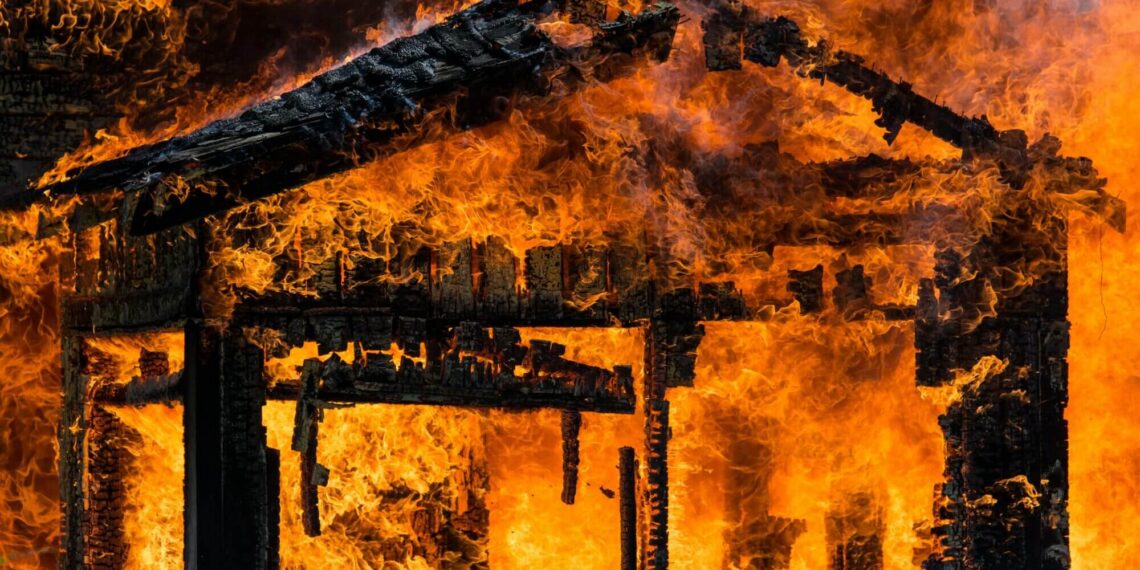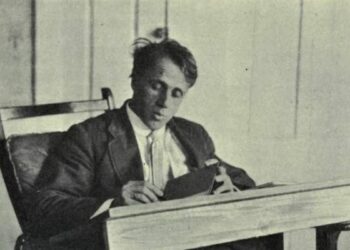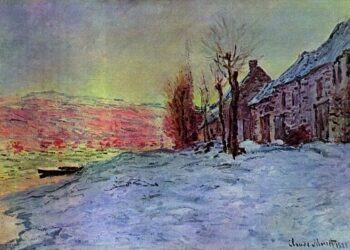Morning in the Burned House Poem Summary Line by Line
The engrossing and moving poem Morning in the Burned House by Margaret Atwood explores themes of memory, loss, and the eerie persistence of the past while taking place in the wake of a devastating event. The poem uses the metaphor of a burned house to do this. Renowned Canadian poet and novelist Atwood addresses the intricacies of the human experience with her unique voice and astute insight.
The poem takes place in a surreal setting, with the speaker waking up in a burned-out house. The speaker confronts the ruins of the past in this burned-out house, which serves as a metaphor for the past and prompts thoughts about trauma, family, and the enduring effects of memory. In order to create a tapestry of feelings, from horror to nostalgia, Atwood uses vivid imagery and a unique narrative structure while the speaker makes her way through the ruins of both real and imagined places.

“Morning in the Burned House,” the title, instantly establishes a somber mood, implying a fresh start following devastation. Even though loss is a harsh reality, the contrast between “morning” and the “burned house” suggests a possibility of rebirth or transformation.
Readers are encouraged to ponder the many levels of meaning that Atwood’s language and imagery convey as they read this poem. The burned house turns into a metaphorical setting where the speaker wrestles with memory’s complexities, facing both the material relics and the intangible feelings connected to what has been lost.
Morning in the Burned House Poem
In the burned house I am eating breakfast.
You understand: there is no house, there is no breakfast,
yet here I am.
The spoon which was melted scrapes against
the bowl which was melted also.
No one else is around.
Where have they gone to, brother and sister,
mother and father? Off along the shore,
perhaps. Their clothes are still on the hangers,
their dishes piled beside the sink,
which is beside the woodstove
with its grate and sooty kettle,
every detail clear,
tin cup and rippled mirror.
The day is bright and songless,
the lake is blue, the forest watchful.
In the east a bank of cloud
rises up silently like dark bread.
I can see the swirls in the oilcloth,
I can see the flaws in the glass,
those flares where the sun hits them.
I can’t see my own arms and legs
or know if this is a trap or blessing,
finding myself back here, where everything
in this house has long been over,
kettle and mirror, spoon and bowl,
including my own body,
including the body I had then,
including the body I have now
as I sit at this morning table, alone and happy,
bare child’s feet on the scorched floorboards
(I can almost see)
in my burning clothes, the thin green shorts
and grubby yellow T-shirt
holding my cindery, non-existent,
radiant flesh. Incandescent.
Morning in the Burned House Poem Summary
Lines 1-4: The poem opens with the speaker waking up in a house that has experienced a fire. The phrase “In the burned house I am eating breakfast” immediately establishes a surreal and unsettling atmosphere. The speaker mentions eating cereal and drinking milk, ordinary actions that take on a haunting quality in the context of the burned house. This juxtaposition of the mundane with the traumatic sets the tone for the exploration of memory and loss.
Lines 5-8: As the speaker moves through the house, they encounter remnants of the past. The images of “my dresses hanging / side by side” evoke a sense of loss and nostalgia. The use of the possessive pronoun “my” emphasizes the personal connection to the destroyed belongings. The idea of clothes as “bitten and devoured” by the fire introduces an element of violence and destruction.
Also Read-
- The Weary Blues Poem Summary Line by Line
- Ozymandias by Percy Bysshe Shelley Poem Summary Line by Line
- An American Sunrise Poem Summary by Joy Harjo
Lines 9-12: The speaker describes finding a photograph of the house before it burned. The photograph becomes a powerful artifact that preserves the memory of what once was. The image of the “lost elbow,” a part of the house no longer there, adds to the overall sense of absence and irrevocable change.
Lines 13-16: The speaker’s encounter with the photograph triggers a flood of memories. The mention of “my father and my mother and me” introduces the family dynamic, and the phrase “my father and my mother and me and the cats” brings in elements of domesticity and companionship. The repetition of “my” emphasizes the personal connection to these memories.
Lines 17-20: The poem takes a darker turn as the speaker recalls a disturbing incident involving a “man in a yellow helmet” who is likely a firefighter. The use of vivid and visceral imagery, such as “screaming out the word Fire,” conveys the trauma and chaos of the moment. The repetition of the word “Fire” underscores the urgency and horror of the event.
Lines 21-24: The speaker reflects on the aftermath of the fire, describing the “ashy air” and the smell of burning. The image of the “nobody, nobody” emphasizes the desolation and emptiness that follows the destructive force of the fire. The repetition of “nobody” also conveys a sense of isolation and abandonment.
Lines 25-28: The poem shifts to a different scene, with the speaker imagining a garden where “tomatoes grow like pimples.” This surreal image introduces an element of grotesque humor. The mention of the “neighbours / running down with pails and the old / bullshit-sack” adds a touch of absurdity to the otherwise serious and somber tone.
Lines 29-32: The speaker continues to reflect on the aftermath of the fire, describing the remnants of the burned house as a “charred stump.” The image of the “twisted apples” suggests a distortion and decay of what was once familiar and wholesome. The use of the word “twisted” conveys a sense of deformity and disruption.
Lines 33-36: The speaker reflects on the nature of memory and its ability to distort or preserve the past. The phrase “Time, which sees all things,” suggests that time itself is a witness to the changes and losses experienced by the speaker. The idea of “wandering, forever / lonely” conveys a sense of perpetual longing and isolation.
Lines 37-40: The poem takes a reflective turn as the speaker contemplates the larger themes of life and death. The image of the “skull, the eyes, the bony knees” evokes a stark and visceral portrayal of mortality. The mention of the “miles of bad cement” adds a sense of desolation and decay to the imagery.
Lines 41-44: The speaker reflects on the idea of rebirth and resurrection. The phrase “Out of the ashes / I rise with my red hair / and I eat men like air” introduces a powerful and assertive image. The color red, often associated with passion and vitality, contrasts with the earlier images of destruction. The idea of consuming men like air suggests a bold and transformative reclaiming of agency.
Lines 45-48: The poem concludes with a return to the present moment. The speaker is once again in the burned house, and the final lines echo the opening ones. The repetition of “In the burned house” creates a circular structure, emphasizing the cyclical nature of memory and the haunting persistence of the past.
Conclusion
Margaret Atwood’s “Morning in the Burned House” is a moving examination of memory, grief, and resiliency following a traumatic incident. Atwood expertly crafts a story that explores the speaker’s psychological and emotional landscapes in addition to the physical ruins of a burned-out house. Through striking imagery, fantastical settings, and introspective passages, the poem develops into a meditation on the long-lasting effects of trauma and the ways in which people negotiate the difficult terrain of memory.
The burned-out house turns into a symbolic setting where the speaker faces the ghosts of the past, setting off a series of memories that vary from the banal to the startlingly vivid. Atwood captures the subtleties of human experience and the lasting effects of severe loss with an evocative and precise language. With its return to the burned house, the poem’s cyclical structure highlights the enduring quality of memory and the irresistible pull of the past.
As readers journey through this poem, they are invited to contemplate the universal themes of mortality, rebirth, and the transformative potential inherent in the act of remembering. “Morning in the Burned House” remains a testament to Atwood’s literary prowess, offering a nuanced exploration of the ways in which individuals grapple with the complexities of their personal histories.
FAQ:
1. What is the significance of the burned house in the poem?
The burned house serves as a powerful metaphor for the aftermath of a traumatic event. It becomes a symbolic space where the speaker confronts the physical and emotional ruins of the past, exploring the enduring impact of loss and the complexities of memory.
2. How does Atwood use imagery in the poem?
Atwood employs vivid and evocative imagery to create a sensory experience for the reader. The burned house, the remnants of belongings, and the surreal scenes contribute to the overall atmosphere of the poem, allowing readers to visualize and feel the emotional weight of the narrative.
3. What is the significance of the cyclic structure of the poem?
The cyclic structure, with its return to the burned house, emphasizes the perpetual nature of memory. It suggests that the past is an inescapable presence, continually influencing the present. The cyclic nature also reinforces the theme of renewal and rebirth amidst the ruins.
4. How does the poem explore the theme of resilience?
The poem reflects resilience through the speaker’s navigation of the burned house and the memories it holds. The act of remembering, despite the trauma, becomes a form of resilience. The final lines, with the assertion of rising “with my red hair,” convey a sense of reclaiming agency and asserting vitality in the face of adversity.
5. What is the role of the photograph in the poem?
The photograph serves as a powerful artifact that triggers a flood of memories for the speaker. It becomes a tangible link to the past, preserving a moment before the destruction. The image of the “lost elbow” in the photograph adds to the overall theme of irreparable loss.




